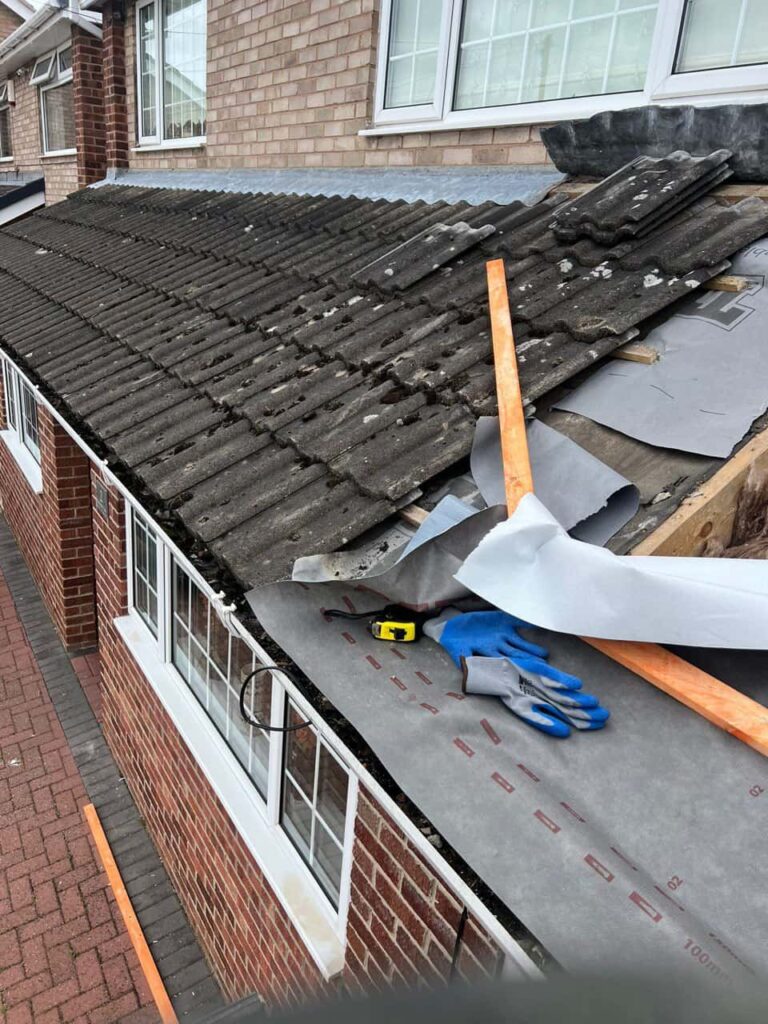Hip roofs are a popular architectural choice that combines functionality with aesthetic appeal, providing a range of benefits that make them ideal for various building types. At LS Roofing Croxley Green, we specialise in roofing solutions that enhance both the durability and appearance of properties in Croxley Green, Hertfordshire. This post delves into what makes hip roofs a preferred choice in modern and traditional architecture, exploring their advantages and ideal applications.
What is a Hip Roof?
A hip roof, or hipped roof, is a type of roofing design where all sides slope downwards towards the walls, with no vertical ends. The slopes on each side meet at the corners, creating a gentle, pyramid-like appearance. This style is distinct from gable roofs, which have flat ends, and is considered to provide greater stability and resistance to wind.
Hip roofs can come in various forms, including:
- Simple hip roof: Slopes on all four sides that converge at a central peak.
- Pyramid hip roof: A hip roof with all sides meeting at a single point, creating a pyramid shape often used on smaller structures.
- Cross-hipped roof: Two hip roofs that intersect, forming a more complex layout suitable for L-shaped or irregular buildings.
Benefits of Hip Roofs
Choosing a hip roof offers several advantages, making it suitable for both residential and commercial buildings. Here are some of the primary benefits that make this roof design so desirable:
- Stability and Weather Resistance
One of the standout benefits of a hip roof is its stability. Because all sides slope downwards, this design offers exceptional resistance to high winds, making it ideal for regions prone to storms or harsh weather.
- Wind resistance: Unlike gable roofs, which have flat ends that can catch the wind, the sloping sides of a hip roof deflect strong gusts, reducing the risk of damage.
- Drainage efficiency: The downward slopes encourage rain and snow to run off easily, preventing water from pooling and reducing the risk of leaks or water damage over time.
- Enhanced Insulation and Energy Efficiency
The structure of a hip roof allows for better insulation and ventilation, helping to maintain a comfortable indoor temperature and potentially reduce energy costs.
- Efficient insulation: The additional space within a hip roof design makes it easier to insulate properly, creating a more energy-efficient building. This is particularly beneficial in regions with extreme seasonal temperatures, as a well-insulated roof reduces heat loss in winter and heat gain in summer.
- Improved ventilation: Hip roofs often incorporate ventilation systems that allow warm air to escape, reducing the likelihood of moisture build-up and preventing potential damage to the roof structure.
- Greater Structural Integrity
Thanks to their sloping design, hip roofs are structurally sound and highly durable. This style evenly distributes weight along the building’s walls, providing added support and longevity.
- Weight distribution: Unlike flat or gable roofs, hip roofs distribute weight more evenly, reducing pressure on load-bearing walls. This makes them an excellent choice for larger or multi-storey structures.
- Compatibility with heavy roofing materials: The sturdy construction of a hip roof can support heavier roofing materials, such as tile or slate, allowing for additional customisation options that enhance the roof’s durability and aesthetic appeal.
- Aesthetic Appeal and Versatility
Hip roofs bring a timeless aesthetic that complements a wide range of architectural styles. Their balanced, symmetrical design provides a pleasing visual structure that enhances curb appeal.
- Architectural versatility: Hip roofs can be customised to suit both modern and traditional styles. Their clean lines and sloping sides give them a classic look that works well with brick, stone, and timber exteriors.
- Potential for additional features: Due to their slope and stability, hip roofs can accommodate features such as dormer windows, skylights, or even a roof deck, adding further functionality and appeal to the property.
Ideal Uses of Hip Roofs in Architecture
Hip roofs are commonly used across different building types due to their versatility and resilience. Some ideal applications include:
- Residential homes: Hip roofs are highly popular in residential architecture, especially for detached and semi-detached homes. They provide a stylish, weather-resistant roof that complements various house designs.
- Commercial buildings: Many commercial buildings, such as schools, offices, and hotels, utilise hip roofs for their structural integrity and aesthetic qualities. The design also supports better insulation, which can be beneficial for energy efficiency.
- Buildings in storm-prone areas: For properties located in areas susceptible to strong winds or heavy rain, hip roofs offer a safer, more durable roofing solution.
- Large or irregularly shaped buildings: Cross-hipped roofs are ideal for L-shaped or irregularly shaped buildings. They offer excellent coverage and stability for properties with complex layouts, ensuring that all areas are well-protected from the elements.
Conclusion
Hip roofs offer numerous benefits, from their impressive weather resistance and insulation capabilities to their versatility in design. Whether for residential or commercial purposes, hip roofs are a practical choice that brings added value, longevity, and aesthetic appeal to any property. Their stability and durability make them particularly suited for buildings in areas with challenging weather conditions, ensuring long-lasting protection and a timeless architectural look.
If you’re considering a hip roof for your property in Croxley Green, Hertfordshire, contact LS Roofing Croxley Green. Our team is dedicated to providing high-quality roofing solutions tailored to your specific needs. We’ll guide you through the process of choosing the right roof design to enhance the value, efficiency, and beauty of your building. Reach out today to learn more about how a hip roof can benefit your property and to receive a professional consultation.
Call us on: 01923 961 797
Click here to find out more about LS Roofing Croxley Green
Click here to complete our contact form and see how we can help with your roofing needs.

